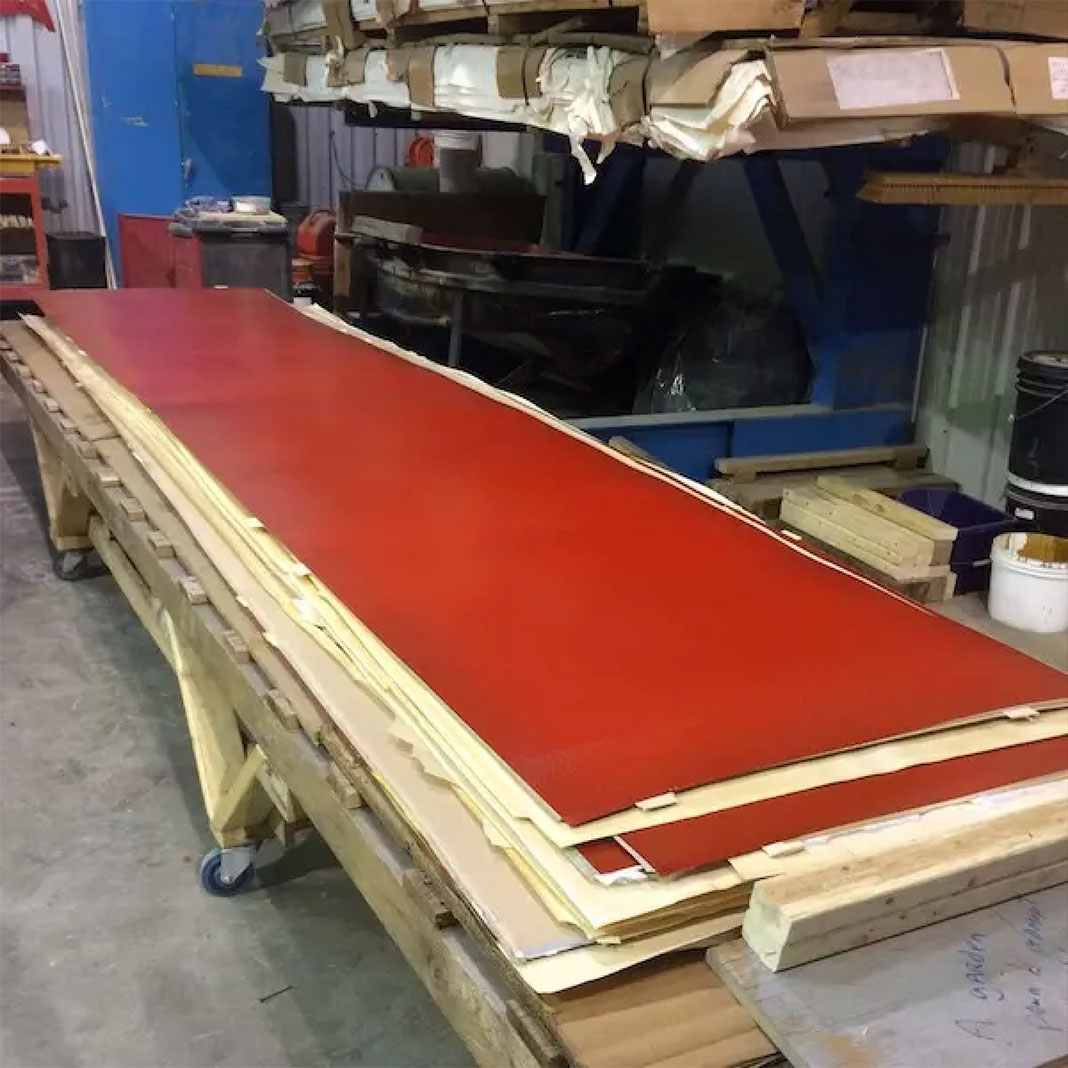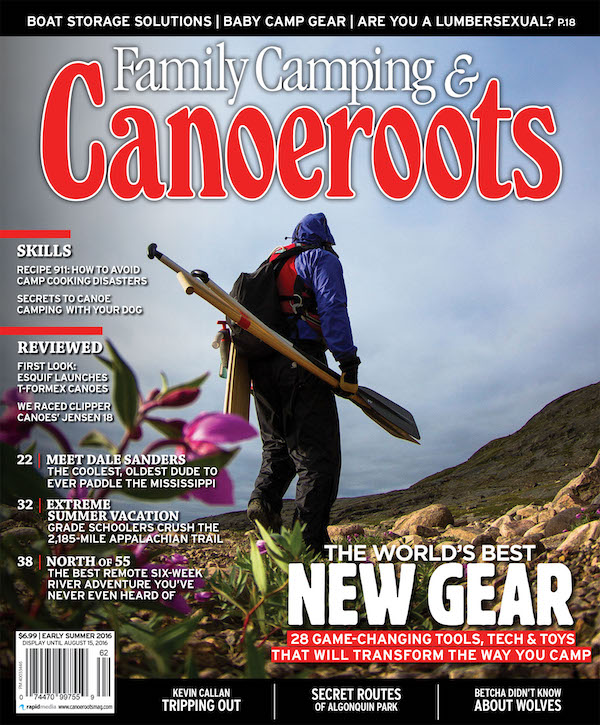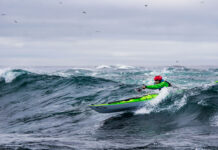Since the 2013 announcement that plastics giant PolyOne would cease the production of Royalex, Esquif International has been on a quest to manufacture an even better material for whitewater open boaters and river trippers. The three-year-long saga has been one of the industry’s most exciting news stories, but now the wait is finally over with the arrival of T‑Formex.
Esquif owner, Jacques Chassé, has finally produced sheets of the long-awaited material. When Chassé quietly handed me a two-inch by two-inch piece of T-Formex in the summer of 2014 he said it would be 10 percent lighter and 20 times more abrasion resistant than Royalex. It’s difficult to know with a paint swatch-size piece of material, but it certainly was more difficult to peel, dent or bend than any old piece of Royalex I had kicking around our boat garage.
Switching to T-Formex will not require any re-tooling of former Royalex-boat building operations—Esquif’s or anyone else’s. Once in full production, Chassé says Esquif will be able to produce 40 sheets of T-Formex per day.

Putting T-Formex to the test
We ignored an unseasonably late winter snowstorm warning to bring one of the first T-Formex canoes out of the mold—a playful Pocket Canyon—to the Canoeroots office and began putting this material to the test.
So what’s the difference? Royalex vs. T-Formex
To the naked eye, not much.
A T-Formex Pocket Canyon sitting beside a Royalex Pocket Canyon would look damn near the same. The only difference you’ll notice is that T-Formex looks better. Royalex’s finish is dull by comparison.
“We wanted to create a replacement to a product that people knew and trusted, but an improved finish was important too,” says Chassé. T-Formex’s outer skin material feels faster in the water and slides over rocks more easily.
We drilled the rivets out of the deck plate to see what the sandwich construction of the new material looks like. Again, pretty much looks the same as it always did.
Working from the outside of a T-Formex hull in, first is Chassé’s new and proprietary outer skin. Then a layer of standard ABS, followed by a layer of foam that Chassé says is similar to what’s inside Royalex. Then, a second layer of ABS is added to the sandwich, and finally, another proprietary layer on the inside. Not a very high-tech explanation, but we’re not plastics experts, we’re paddlers. And for the record, after 40 years of production, we didn’t really know what Royalex was made of either.
It’s a good time of year to come out with a new tough material and send it off to a magazine. The rivers are in flood. The rocks are much below the surface. Water is running through the trees. Left with little choice, we used a selection of shiny camp tools to test the claims of T-Formex’s durability. In a side-by-side test with an older Royalex hull, we’re able to confirm T-Formex seems more abrasion resistant and less likely to peel.
As for how this boat paddles—well, it paddles like any other Pocket Canyon we’ve been in since we reviewed one in Canoeroots’ sister whitewater publication, Rapid, in 2008. The Pocket Canyon is a scaled-down version of Esquif’s expedition-ready Canyon.
Alternatives to Royalex-Like Materials
While Chassé has been working to bring T-Formex to market over the past three years, other manufactures have been creating alternative durable hulls to fill the Royalex void, including Nova Craft Canoe, Mad River Canoe, Echo Paddles and Boats, Trailhead and H2O Canoes to name a few.
It seems this material innovation has been good for canoeing. We’re seeing lighter and tougher composite materials and blends of materials. We’re paddling popular models in newer materials and realizing that lighter weight and stiffness make our favorite boats even better. While the end of Royalex production and long wait for a replacement has opened the door to new ideas, many of the manufactures have been hoping and waiting for Chassé to succeed so they can fire up their ovens and crank up production.
T-Formex is better than Royalex
Will the final version of this new material be as good as Chassé originally claimed? Will it be better than Royalex? Will T-Formex save your ass and let you paddle out after a horrible wrap on a remote river? Will T-Formex save canoeing by once again offering a less labor intensive and consequently less expensive manufacturing process? Hard to tell from these photos.
Some of these questions are going to take years of sales reports, solar radiation and some seriously poor lines through shallow rapids to know for sure. In some ways it already is better. Why? Because today Esquif made boats out of T-Formex and that’s got to be better than no boats at all.
 This article originally appeared in the Canoeroots Early Summer 2016 issue.
This article originally appeared in the Canoeroots Early Summer 2016 issue.
Subscribe to Paddling Magazine and get 25 years of digital magazine archives including our legacy titles: Rapid, Adventure Kayak and Canoeroots.









Please keep me in the update of t- formex
Keep us up to date… Like Bill said – I’d like to know too! Is the verdict out on T-formex yet?
For many years used and old milk carton and rubbed on with an iron. Works great.